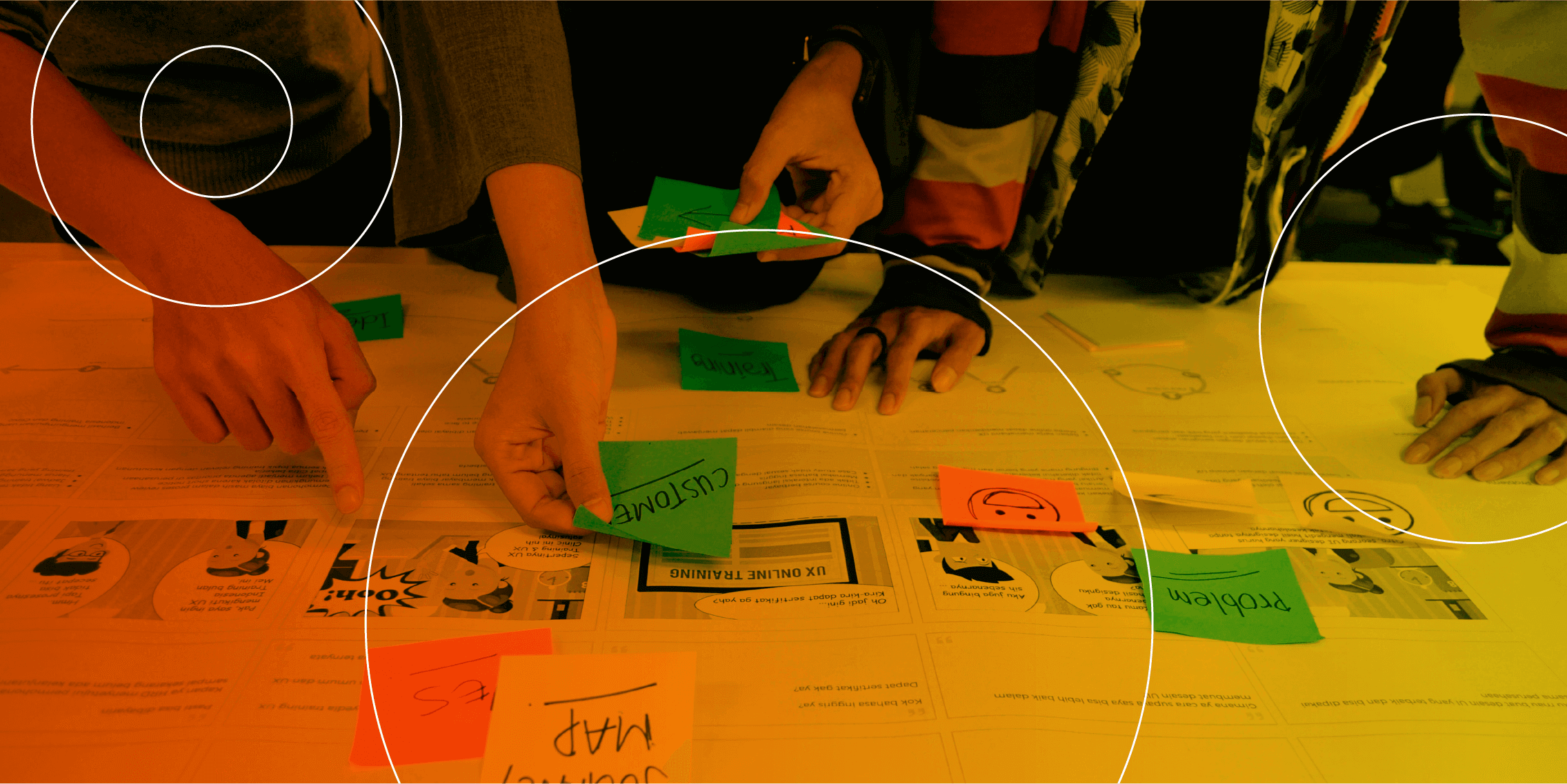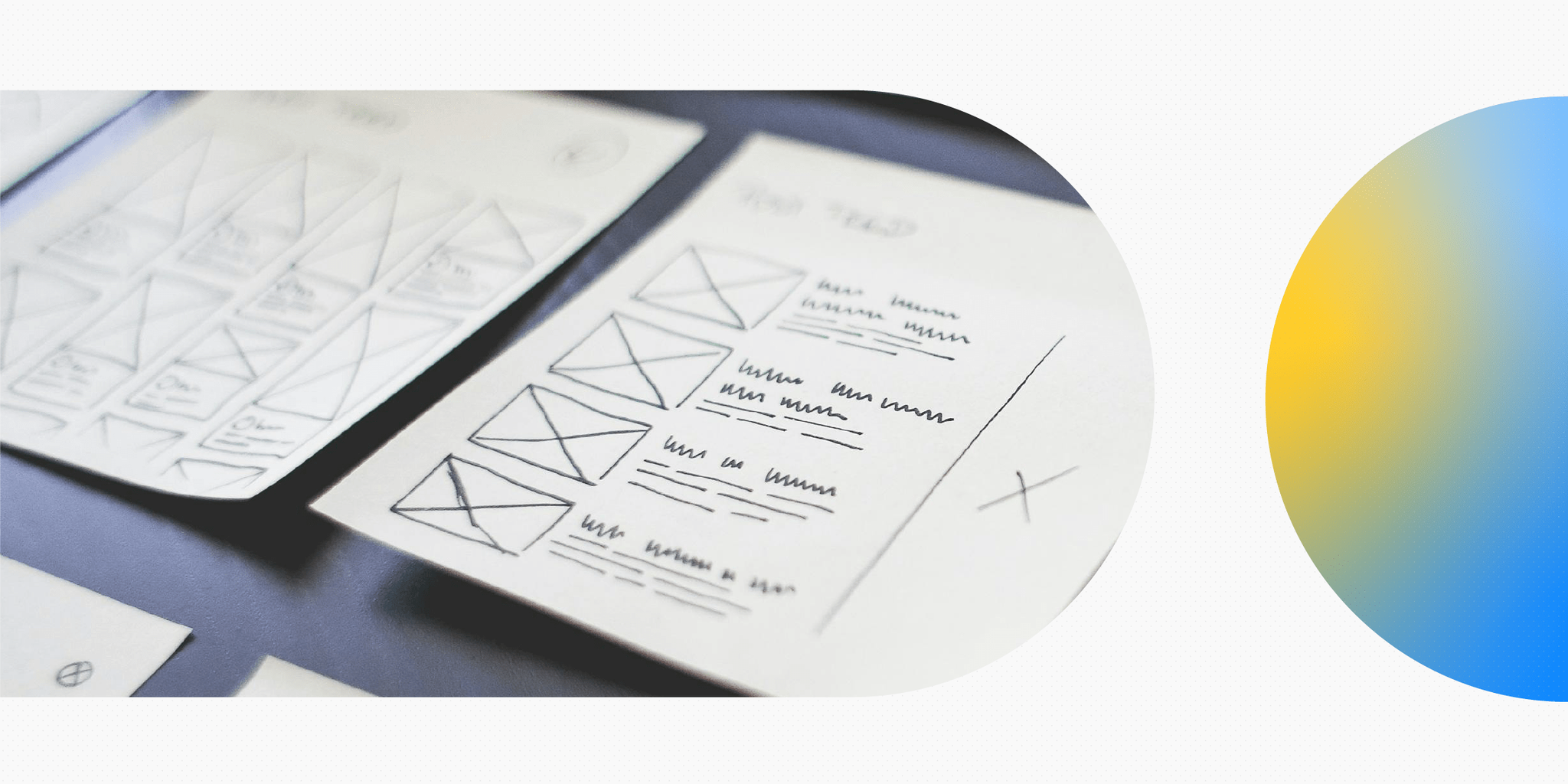If you want to become a UX designer but haven’t yet taken the leap, you’ve probably come up against at least one barrier of entry to the field. There are lots of potential blockers that might be deterring you—from logistical and circumstantial hurdles to the not-insignificant matter of self-doubt.
To help you conquer whatever’s standing in your way, we’ve put together eight of the most common barriers of entry to a career in UX, together with some practical, expert advice on how to overcome them.
UX barrier of entry #1: Not having any professional experience in UX or a design-related field
You want to become a UX designer but you don’t have any experience in the field. You’re coming from a completely unrelated career path and you can’t see any logical connection between your current or previous jobs and the UX designer role.
This is a barrier of entry to UX that many new designers face and there’s no denying that you will have an advantage if you can demonstrate some relevant experience.
But how do you do that if you’re coming from a completely different industry?
First, it’s important to reconsider your definition of “related” or “relevant”. UX actually relies on a variety of transferable skills such as communication, research, a user-centric mindset, problem-solving and empathy. These aren’t unique to UX and you’ve probably already been honing them throughout your career without even realising.
Good UX is all about bringing in different perspectives—which means that good UX designers come from all different backgrounds. We’re actually seeing lots of nurses and teachers breaking into the field via our UX Design Diploma and they make great UX designers because they’re already excellent communicators and problem-solvers, and they’re highly people-focused.
Not having any related experience can be a potential barrier of entry to UX, but the barrier probably isn’t as high as you think. The key is to highlight your transferable skills and draw on your previous experience to bring value to the UX designer role.
UX barrier of entry #2: Not having a UX or design-related degree
You might think you need a graduate or postgraduate degree to work in UX but that’s not necessarily the case. Some companies will list a university degree as a requirement, but it’s unlikely to be a dealbreaker if you tick the more important boxes (such as being able to demonstrate the right skills). And, if it is a steadfast requirement, a degree in an unrelated field will usually suffice.
Not having a university degree is a less significant barrier of entry to UX than you might think and there are several reasons why. For one, UX is a relatively new field (the term “user experience” wasn’t coined until the 1990s) so it’s not a subject that has traditionally been taught at university. Employers are therefore generally not fazed by a candidate not having a related degree.
It’s also important to remember that UX design is a very practical discipline which belongs to the tech world. Employers in the field aren’t focused on university degrees and traditional qualifications; they actually just want to see that you’ve got the skills to do the job—regardless of whether you learnt those skills at university or elsewhere.
If you’re worried that not having a degree will hold you back, you can follow the more flexible (and often more affordable) route of getting a UX design qualification through an online course or bootcamp. Much like coding bootcamps, UX courses have become the norm in the tech industry, and employers consider such qualifications as a viable alternative to a traditional degree. Some courses are even university credit-rated, so you can get the best of both worlds. We explain what that means (and the benefits of choosing a university credit-rated UX certification) here.
UX barrier of entry #3: Finding the time to train as a UX designer while keeping your job
This barrier is very real, and it’s one that many aspiring UX designers will relate to.
You’d love to throw yourself into UX and spend your days training for your new career—but, the reality is, you have a full-time job or a family to care for, or both, and you’re simply not in a position to drop all your responsibilities and become a full-time UX student.
There’s no denying that learning UX is a time-consuming endeavour. Most people won’t be in a position to quit their job and spend years at university or even to take time out to attend an intensive course or bootcamp.
Fortunately, there are lots of courses out there which don’t require you to attend in person or log on at certain times or even to dedicate a fixed number of hours each week. If your time is limited, find a completely flexible online course that will allow you to work through the materials at your own pace and from the comfort of your own home.
In their State of UX in 2022 report, the UX Collective remarks that learning about UX design has “shifted from in-person, intensive and expensive to remote and self-guided. Newly accessible formats include everything from online bootcamps to YouTube playlists, email-based courses, self-guided classes and more”.
Ultimately, there’s something for everyone when it comes to learning UX. We no longer live in a world where the only way to learn new skills is to sit in a classroom or a lecture theatre. The key is to make it work for you. Figure out how much time you can realistically carve out each week (or each month) and choose a course which accommodates that.
Read our guide on studying UX while working.
UX barrier of entry #4: Building a UX portfolio without any industry experience
A professional UX portfolio is a must if you want to get a job in the field. Of course, experienced UX designers have plenty of project work to showcase—but, if you’re a new UX designer, getting your portfolio off the ground can seem like a huge hurdle.
To overcome this barrier of entry to UX, you’ll need to be proactive and creative. That means finding your own opportunities to work your UX magic and turning them into fully-fledged projects for your portfolio.
Some of the most common ways that new UX designers build up their portfolio without any on-the-job experience include unsolicited redesigns, taking on volunteer work and completing a UX course which includes project work in the curriculum.
If you’re concerned about being able to build an impressive portfolio as a new UX designer, we’ve outlined five tried-and-tested methods for finding UX portfolio projects in this post.
UX barrier of entry #5: Not having the drawing skills or artistic ability to work as a designer
This is actually more of a myth than a legitimate hurdle. You might think that a design job requires loads of artistic flair or at least some basic drawing ability. But you’d be wrong!
UX design isn’t about aesthetics and visuals. That’s the job of UI designers (if you’re not familiar with UI, read this introduction to UI design and this guide explaining what a UI designer does). UX is concerned with the overall user experience of a product or service—focusing on whether or not the experience is logical, efficient and user-friendly. It’s about understanding the target user and designing in a way that solves their problems and pain-points. None of those things require you to whip up an artistic masterpiece!
As a UX designer, your role will focus on conducting research to understand your target users’ needs and then utilising these findings to map out the blueprint for a user-friendly product. The most artistic part of the job will be creating wireframes and prototypes—and those are created using special tools and software. Again, no exceptional drawing skills needed.
If you can problem-solve, use your empathy to channel the user’s needs and get to grips with industry-standard UX design tools, you’ll be well on your way to a career in UX. You definitely don’t need to be the next Picasso (or even come close).
UX barrier of entry #6: Being “too old” to start a new career
This is perhaps one of the most frequently asked questions among aspiring UX designers: Am I too old to become a UX designer?
If your age feels like a potential barrier of entry to UX, it’s time to flip your outlook. UX design is all about creating products that are usable, accessible and enjoyable for everyone. That requires a diversity of perspectives—not to mention a multitude of transferable skills and, of course, empathy. Your age (or, more specifically, your wealth of experience) can be a major asset to the role and good employers will recognise that.
Still convinced that UX is reserved for 20-somethings? A study by career firm Zippia confirms otherwise. In a sample of over 30 million UX designer profiles, 39% (i.e. the majority) were over 40. 34% were aged between 30 and 40, while 27% were aged between 20 and 30.
So: You’re not too old to become a UX designer, and you can overcome this perceived barrier of entry by viewing your age and experience as an asset rather than a drawback.
UX barrier of entry #7: Information overload… there’s so much to learn, where do you start?
UX is a vast field, and there’s a lot to learn—especially if you’re starting from scratch. And, with such a boundless wealth of content out there, getting started at all can feel like a huge and insurmountable barrier.
As you’re here reading this article, it seems like you’re off to a good start: reading up on the field and making the most of free resources such as blog posts and UX podcasts for beginners.
Once you’ve got a good grounding in the basic theory and are familiar with some of the key UX terminology, the easiest and most effective way to overcome information overload is to take a UX design course. A course has the benefit of not only keeping you focused on learning the most important concepts and skills but also of making sure you learn them in the right order—and breaking them down into bitesize chunks.
New UX designers do have a lot to learn, it’s true. But, with the right course, you can cut through the noise and focus your learning in the right areas.
UX barrier of entry #8: Standing out from other candidates in the crowded UX job market
Another potential barrier of entry into UX is the challenge of standing out in the job market. With the proliferation of online courses and easily accessible options for studying UX, you might have concerns about being a small fish in a very big sea of newly-qualified designers competing for jobs.
It’s true that UX design is becoming an increasingly popular career choice. UX Collective reports that over 900 new members join their UX group on LinkedIn every day and that over 400 thousand new UX designers have emerged from Google’s new UX design course alone.
That sounds like a lot of UX designers… are there enough jobs for them all?
Despite the growing popularity of UX as a career path, there is still a huge skills gap in this area. A key finding from Hired.com’s report on the technology skills landscape notes that “There is a significant gap opening up between the skills employees have and the skills employers want, especially in four key areas: data, security, UI, and UX”.
Yet another trend highlighted in the UX Collective’s State of UX 2022 report is how more and more companies are having to turn to freelance platforms to get their design work done. Per the report: “Companies that struggle to hire full-time designers end up tapping into Fiverr, Upwork, Toptal, and similar freelance platforms to meet their short-term needs”.
UX continues to be a growing field with high demand for designers with all different kinds of backgrounds and skill sets. You may be one of many up-and-coming designers but your value is unique. As long as you can tell your own story through your UX portfolio and highlight the unique experience and perspectives you bring to the table, you’ll be able to stand out as a worthy candidate.
It’s important to be realistic and be aware of all the possible hurdles you might face when starting your career in UX. Just don’t let them stand in your way for too long: take our advice and tear down those barriers one by one.
If you need some further inspiration, read Vesna’s story of how she went from working as a hotel receptionist to becoming a UX designer.





